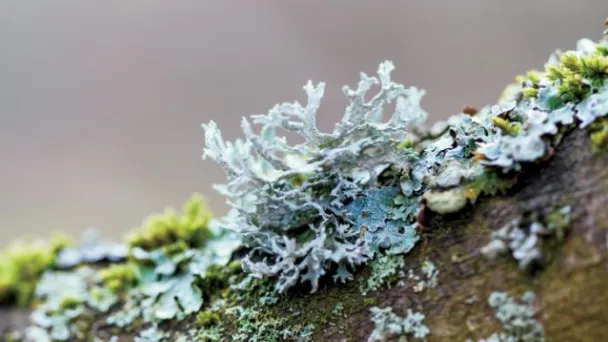Lichens vs. Mosses - Differences & How Do You Identify
Written by Ivy
Mar 28 2023

Lichens and mosses are two of the most common plant-like organisms found in the world. Despite their superficial similarities, they are actually quite different from each other in terms of their biology, ecology, and uses. In this article, we will explore these differences and compare the features of these two fascinating organisms.
Differences Between Lichens vs. Mosses
Biology
.webp)
Lichens are composite organisms made up of a fungus and either a green alga or a cyanobacterium. The fungal component provides the structure and protection, while the algal or bacterial component provides the photosynthetic capability. Together, these two organisms form a symbiotic relationship that allows lichens to grow in a variety of environments, including harsh, rocky landscapes, deserts, and tundra.
Mosses, on the other hand, are a type of bryophyte, a group of plants that lack true roots, stems, and leaves. Instead, they have simple, leaf-like structures called phyllids that absorb water and nutrients from the environment. Mosses reproduce by spores, which are produced in capsules at the end of a stalk called a seta.
Ecology
Lichens are known for their ability to colonize harsh environments where few other organisms can survive. This is because they are able to absorb moisture and nutrients from the air and can grow on rocks, trees, and other substrates. Some lichens even have specialized structures that allow them to fix nitrogen from the atmosphere, making them important contributors to soil fertility in certain ecosystems.
Mosses also play an important ecological role. They are often found in damp, shady environments such as forests, where they help to retain moisture in the soil and provide habitat for a variety of small animals, including insects, spiders, and snails. Mosses are also important indicators of environmental health, as they are sensitive to changes in moisture levels, pollution, and other environmental stressors.
.webp)
Uses
Lichens and mosses have a long history of use by humans for a variety of purposes. Lichens have been used as dyes, food sources, and traditional medicines by many cultures throughout history. Some species of lichens, such as reindeer moss, are still used as a food source in certain parts of the world. Lichens also play an important role in the production of perfumes and cosmetics, as they contain compounds that give off pleasant fragrances.
Mosses have also been used for a variety of purposes. In some cultures, they have been used as a traditional remedy for a variety of ailments, including wounds, burns, and skin irritations. Mosses are also commonly used as a decorative element in gardens and floral arrangements, and are sometimes used to line hanging baskets or as a ground cover in landscaping projects.
Conclusion
.webp)
In conclusion, lichens and mosses are two fascinating plant-like organisms that have many unique features and uses. While lichens are composite organisms made up of a fungus and either a green alga or a cyanobacterium, mosses are bryophytes that lack true roots, stems, and leaves. Both organisms play important ecological roles and have a long history of use by humans for food, medicine, and other purposes. By understanding the biology and ecology of lichens and mosses, we can gain a deeper appreciation for the complex relationships that exist in the natural world.
FAQs
Are Moss and Lichen the Same Thing?
A sandwich of fungi and algae is called a lichen, and a moss is a straightforward plant. Like trees, ferns, and other multicellular plants like wildflowers, mosses have leaflets that are made of cells that can synthesize light.
How Do You Identify a Lichen?
Lichenologists use a lichen key to distinguish between species as well as everyday household chemicals and some uncommon chemicals to test the color reaction of the special compounds found in the structure of the lichen.
What Are Algae Lichens and Mosses?
On bark, rock, and other hard surfaces, non-parasitic organisms that resemble plants, such as lichens, moss, and algae, can be found. Despite being frequently confused with a fungal disease, lichens and algae don't harm the plants on which they grow.
Latest Updated
- Lichens vs. Mosses - Differences & How Do You Identify
- Poison Hemlock vs. Queen Anne's Lace - Differences & How to Tell
- How Long Do Peace Lilies Last - How to Make Them Live Longer
- Peace Lily Root Rot - Signs & How to Treat
- Can You Divide Peace Lily Plants - When Should You Split
- How to Prune Peace Lily Plants - 2023 Essential Guide
- How to Growing Peace Lily In Water - Step by Step Guide
- How To Get Rid of Virginia Creeper - Find the Efficiency Way
- Which Bell Peppers Are the Sweetest - According to Science
- Wood Sorrel vs. Clover - Differences & Medicinal Uses
Popular Articles
- Winter maintenance of Antirrhinum Majus
- How to Grow Terminalia Mantaly Tree
- How to Grow and Care for Crossostephium Chinense
- How to grow Antirrhinum Majus in spring
- Peristeria Elata (Dove Orchid) Profile: Info & Care Guide
- Underwatered Snake Plant (Sansevieria Trifasciata) - Signs And How To Fix
- How to Care for Brazilian Jasmine Plant (Mandevilla Sanderi)
- Rosa Chinensis (China Rose): Plant Growing & Care Tips
- How to Grow & Care for Graptopetalum Purple Delight in Summer
- How to Care for Baby Sun Rose (Aptenia Cordifolia)